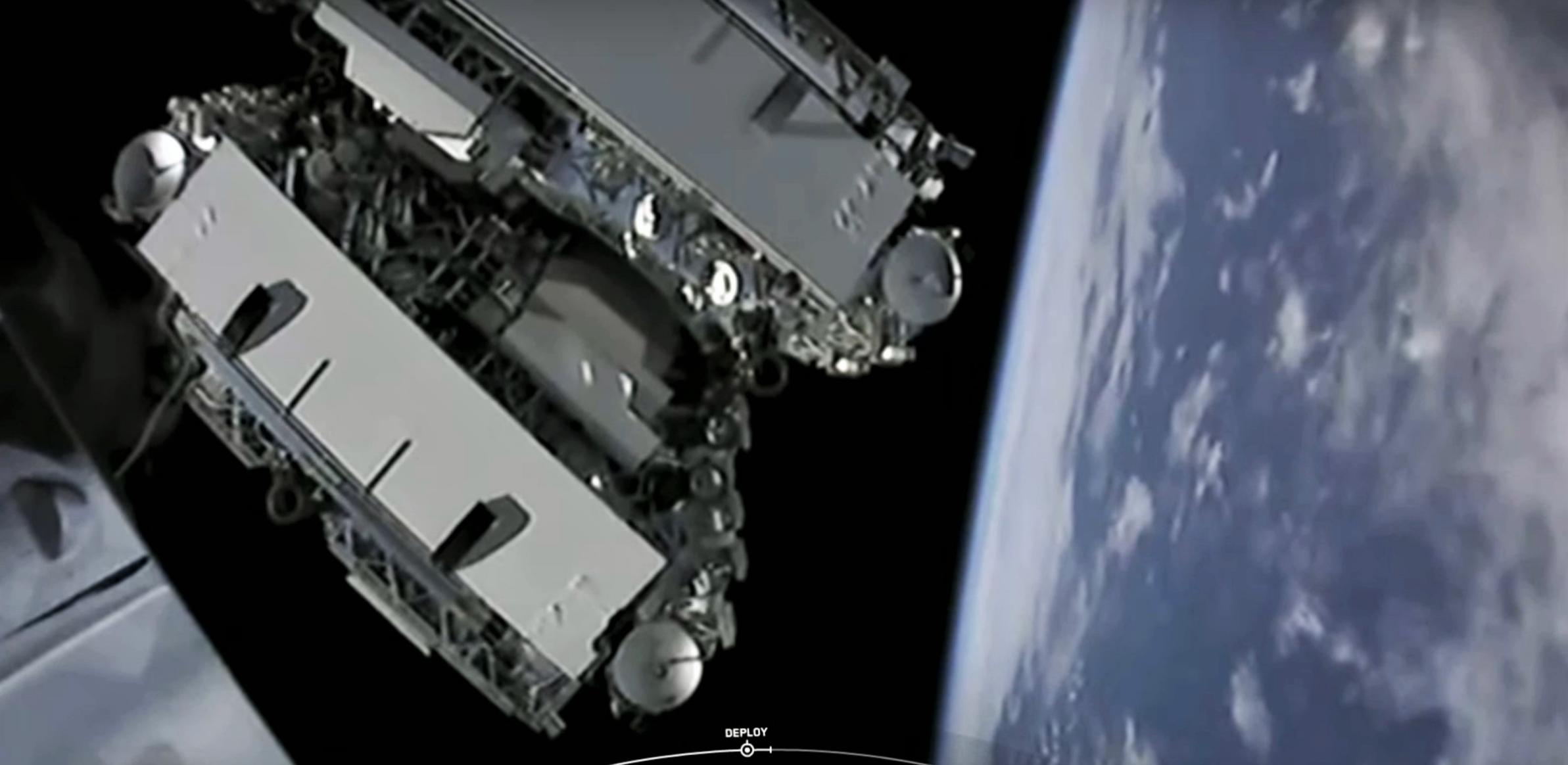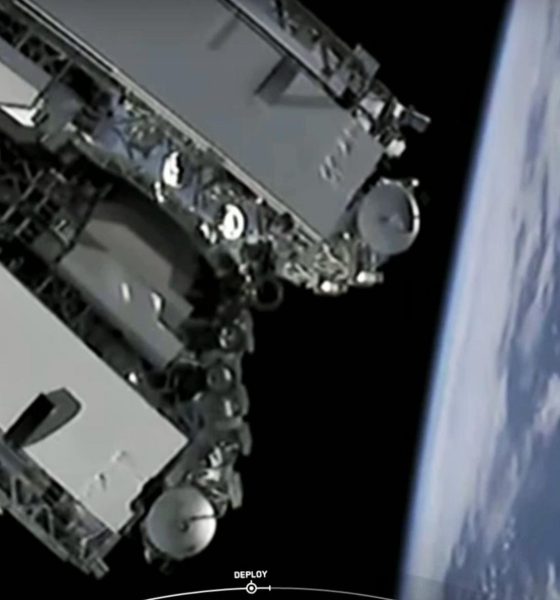

News
SpaceX's Elon Musk says Starlink user antennas will be like "UFOs on a stick"
SpaceX CEO Elon Musk has teased the first detailed description of the Starlink antennas (“user terminals”) customers will need to connect to the massive satellite internet constellation, revealing a few new and unexpected details about the critical hardware.
Although nearly all public focus is currently (and understandably) on the production and launch of Starlink satellites themselves, that perspective actually glosses over a second element of the constellation that is at least as important. Starlink, after all, is designed to delivered high-speed, low-latency broadband internet to customers around the world, and that service will not just magically appear in the houses of interested consumers. Similar to satellite TV, customers will gain access to their Starlink internet service with an antenna that will have to be installed somewhere on or around the premises.
The challenge that SpaceX faces with the grounded side of Starlink is that – unlike the geostationary satellites that provide satellite TV – satellites in low Earth orbit (LEO) are visible from a specific point on the ground for just a handful of minutes each. Whereas satellite TV dishes simply need to be pointed at one unmoving spot in the sky, Starlink ground antennas will need to constantly change where they are pointed (or at least track constantly-moving and changing satellites) and do so seamlessly and with incredible reliability.
A step further and even more importantly, while SpaceX unequivocally needs to make its Starlink user terminals extremely capable, simple, and reliable, it will also need to find a way to mass-produce millions (ultimately tens to hundreds of millions) of units and keep the cost to consumers unprecedentedly low. At least before Musk’s January 7th, 2020 comment, it was believed that Starlink user terminals would have to rely almost entirely on high-performance phased-array antennas, referring to antennas that are steered electronically – i.e. without physically moving.
100% phased-array steering would likely result in the best possible user terminal from the standpoint of reliability and performance. However, full phased-array antennas – while making rapid progress – are still extremely expensive to manufacture compared to more basic alternatives, meaning that it could be an immense challenge – possibly much harder than building and launching Starlink satellites themselves – to mass-produce affordable user terminals under that paradigm. It’s possible that SpaceX has actually come to the same conclusion and is choosing to compromise with its first-generation user terminals, prioritizing time to market and cost per unit at the expense of peak performance and optimal reliability.
Competitor OneWeb may actually have a step up on SpaceX on that front, having reportedly already made great progress developing an exceptionally cheap flat-panel phased-array antenna capable of at least decent throughput (10-50 Mbps). On January 7th, Musk revealed that the current iteration of Starlink user terminals look like a “thin, flat, round UFO on a stick” and features “motors to self-adjust [and ensure it’s at the] optimal angle to view [the] sky.”
The latter tidbit came as a bit of a surprise, given that nearly all cutting-edge phased-array antennas in development feature flat-panel designs and mounting hardware and pointedly avoid mechanical steering – one of the great benefits of phased arrays. It’s ultimately unclear what purpose a mechanical pointing motor would serve on a Starlink user terminal. If the terminal is centered around a true phased-array antenna, mechanical steering would be an almost vestigial addition. However, it’s possible that SpaceX has found a way to hybridize electronic (phased-array) and mechanical steering to produce user terminals that are exceptionally cheap and high-performance at the cost of a reliability risk (moving parts).
Ultimately, it looks like we will find out much sooner than later how exactly SpaceX’s Starlink user terminals work, among other details. Musk says that Starlink will be able to start serving customers in Canada and the Northern US with as few as four additional Starlink launches, meaning that some form of beta test could begin after Starlink V1 L6.
As of now, SpaceX has 1-2 more Starlink missions scheduled to launch later this month. If SpaceX averages two launches per month, Starlink could be serving its first customers as early as March or April 2020.
Check out Teslarati’s Marketplace! We offer Tesla accessories, including for the Tesla Cybertruck and Tesla Model 3.

News
Tesla FSD fleet is nearing 7 billion total miles, including 2.5 billion city miles
As can be seen on Tesla’s official FSD webpage, vehicles equipped with the system have now navigated over 6.99 billion miles.

Tesla’s Full Self-Driving (Supervised) fleet is closing in on almost 7 billion total miles driven, as per data posted by the company on its official FSD webpage.
These figures hint at the massive scale of data fueling Tesla’s rapid FSD improvements, which have been quite notable as of late.
FSD mileage milestones
As can be seen on Tesla’s official FSD webpage, vehicles equipped with the system have now navigated over 6.99 billion miles. Tesla owner and avid FSD tester Whole Mars Catalog also shared a screenshot indicating that from the nearly 7 billion miles traveled by the FSD fleet, more than 2.5 billion miles were driven inside cities.
City miles are particularly valuable for complex urban scenarios like unprotected turns, pedestrian interactions, and traffic lights. This is also the difference-maker for FSD, as only complex solutions, such as Waymo’s self-driving taxis, operate similarly on inner-city streets. And even then, incidents such as the San Francisco blackouts have proven challenging for sensor-rich vehicles like Waymos.
Tesla’s data edge
Tesla has a number of advantages in the autonomous vehicle sector, one of which is the size of its fleet and the number of vehicles training FSD on real-world roads. Tesla’s nearly 7 billion FSD miles then allow the company to roll out updates that make its vehicles behave like they are being driven by experienced drivers, even if they are operating on their own.
So notable are Tesla’s improvements to FSD that NVIDIA Director of Robotics Jim Fan, after experiencing FSD v14, noted that the system is the first AI that passes what he described as a “Physical Turing Test.”
“Despite knowing exactly how robot learning works, I still find it magical watching the steering wheel turn by itself. First it feels surreal, next it becomes routine. Then, like the smartphone, taking it away actively hurts. This is how humanity gets rewired and glued to god-like technologies,” Fan wrote in a post on X.
News
Tesla starts showing how FSD will change lives in Europe
Local officials tested the system on narrow country roads and were impressed by FSD’s smooth, human-like driving, with some calling the service a game-changer for everyday life in areas that are far from urban centers.

Tesla has launched Europe’s first public shuttle service using Full Self-Driving (Supervised) in the rural Eifelkreis Bitburg-Prüm region of Germany, demonstrating how the technology can restore independence and mobility for people who struggle with limited transport options.
Local officials tested the system on narrow country roads and were impressed by FSD’s smooth, human-like driving, with some calling the service a game-changer for everyday life in areas that are far from urban centers.
Officials see real impact on rural residents
Arzfeld Mayor Johannes Kuhl and District Administrator Andreas Kruppert personally tested the Tesla shuttle service. This allowed them to see just how well FSD navigated winding lanes and rural roads confidently. Kruppert said, “Autonomous driving sounds like science fiction to many, but we simply see here that it works totally well in rural regions too.” Kuhl, for his part, also noted that FSD “feels like a very experienced driver.”
The pilot complements the area’s “Citizen Bus” program, which provides on-demand rides for elderly residents who can no longer drive themselves. Tesla Europe shared a video of a demonstration of the service, highlighting how FSD gives people their freedom back, even in places where public transport is not as prevalent.
What the Ministry for Economic Affairs and Transport says
Rhineland-Palatinate’s Minister Daniela Schmitt supported the project, praising the collaboration that made this “first of its kind in Europe” possible. As per the ministry, the rural rollout for the service shows FSD’s potential beyond major cities, and it delivers tangible benefits like grocery runs, doctor visits, and social connections for isolated residents.
“Reliable and flexible mobility is especially vital in rural areas. With the launch of a shuttle service using self-driving vehicles (FSD supervised) by Tesla in the Eifelkreis Bitburg-Prüm, an innovative pilot project is now getting underway that complements local community bus services. It is the first project of its kind in Europe.
“The result is a real gain for rural mobility: greater accessibility, more flexibility and tangible benefits for everyday life. A strong signal for innovation, cooperation and future-oriented mobility beyond urban centers,” the ministry wrote in a LinkedIn post.
News
Tesla China quietly posts Robotaxi-related job listing
Tesla China is currently seeking a Low Voltage Electrical Engineer to work on circuit board design for the company’s autonomous vehicles.

Tesla has posted a new job listing in Shanghai explicitly tied to its Robotaxi program, fueling speculation that the company is preparing to launch its dedicated autonomous ride-hailing service in China.
As noted in the listing, Tesla China is currently seeking a Low Voltage Electrical Engineer to work on circuit board design for the company’s autonomous vehicles.
Robotaxi-specific role
The listing, which was shared on social media platform X by industry watcher @tslaming, suggested that Tesla China is looking to fill the role urgently. The job listing itself specifically mentions that the person hired for the role will be working on the Low Voltage Hardware team, which would design the circuit boards that would serve as the nervous system of the Robotaxi.
Key tasks for the role, as indicated in the job listing, include collaboration with PCB layout, firmware, mechanical, program management, and validation teams, among other responsibilities. The role is based in Shanghai.
China Robotaxi launch
China represents a massive potential market for robotaxis, with its dense urban centers and supportive policies in select cities. Tesla has limited permission to roll out FSD in the country, though despite this, its vehicles have been hailed as among the best in the market when it comes to autonomous features. So far, at least, it appears that China supports Tesla’s FSD and Robotaxi rollout.
This was hinted at in November, when Tesla brought the Cybercab to the 8th China International Import Expo (CIIE) in Shanghai, marking the first time that the autonomous two-seater was brought to the Asia-Pacific region. The vehicle, despite not having a release date in China, received a significant amount of interest among the event’s attendees.








